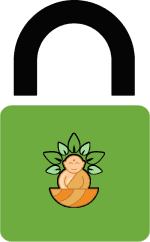Brain Training For Success – Lesson 2.4 – How To Eliminate A Limiting Belief
(Aisha Tyler)
Welcome to Lesson #12 of the Brain Training for Success course!
How many limiting beliefs did you discover in just one area of your life?
Identifying limiting beliefs isn’t fun, but now you’re going to learn how to get rid of them for good.
Eliminating a limiting belief is challenging, but doable – even if you’ve been carrying many of them for years.
Remember, where there’s a will, there’s a way.
Follow this 7-step process to banish a limiting belief:
Read The Belief Aloud And Ask Yourself, “Do I Really Know That This Is True?”
Have you experienced this yourself enough times to be confident that it is true?
Remember: you can’t accurately draw conclusions from a limited number of experiences.
Do you really know that this belief is true without a shred of doubt?
Where Did You Come Up With This Belief?
For example, did your limiting belief about money come from your mom? Was your mom a wealthy person?
If she wasn’t at that time, then she’s not a reliable source of information. After all, an expert on money would be able to have a lot of it.
If someone hasn’t had a lot of money, then they don’t really know how to accumulate it or what it means to have it.
Consider whether or not the source of your belief is a valid source.
Your beliefs should come from your own personal experiences and from the advice of experts.
That’s it.
If your dad wasn’t a great college student, you can find a better source of information about what it takes to be successful in college.
Any other source of information you should consider suspect.
Rely on experts – they are easy to find and there’s no reason to take stock tips from a homeless man, which is what you’re doing when you take advice from people that haven’t been extremely successful in your area of interest.
Simply State To Yourself, “I Choose Not To Believe This Anymore. It’s Not True.”
It might sound trite, but stating your intention has a profound effect.
Look for supporting evidence – find some reasons and examples why this limiting belief is false. For example:
- The person that told me this doesn’t really know.
- I’ve never actually tried it for myself.
- I’ve seen others that are less capable than me be successful at this.
At the very least, you should feel a sense of doubt about that limiting belief.
If you don’t, then keep coming up with more reasons.
Get online and read some articles by someone that you feel is truly an expert on the topic of your belief.
Search for examples that the belief is false.
Imagine how much your life would change if you didn’t have this belief in your life.
Create A New Belief That Serves You
This will be the opposite of the limiting belief or at least something along those lines.
Create a belief that will improve your life and support your ability to take action to make your life better.
Find examples to support this new belief. Any belief will be more stable if it has supporting information and evidence.
Really try to prove that it’s true. Imagine that you had to prove to someone else that your new belief is accurate. That should get you where you need to be.
Measure Yourself
Each day, check yourself. How do you feel about your new belief? How do you feel about your old belief?

Sorry - The Rest Of This Article Is Only For Self Help Nirvana Members
JOIN NOW FOR ONLY $7Self Help Nirvana is an online community for everybody whose goal is personal improvement and development. Become a Self Help Nirvana member today and get access to everything here at SelfHelpNirvana.com!
Already a member? Sign in.
 |
 |






